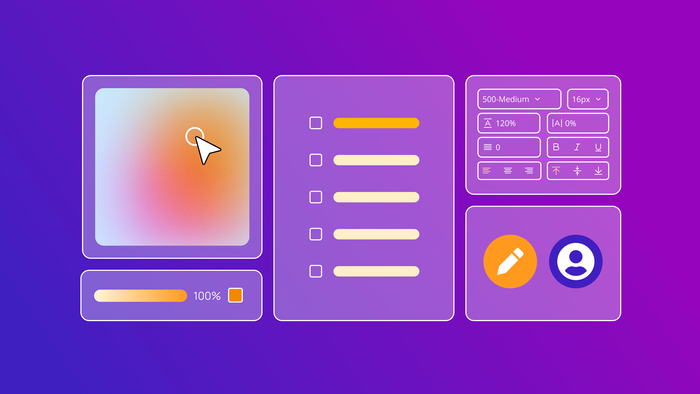Great brands are easily recognizable: by their name, their logo, even just their color. But a great brand goes way deeper than those elements.
A memorable brand uses many branding elements in tandem. But when anything can be part of your brand, it can be hard to know where to start.
We’re here to help: Focus on these 15 essential branding elements first, and you’ll be off on the right foot.
What are brand elements?
Brand elements are all the individual assets or pieces that make up your brand. They include tangible aspects, like your logo, your brand name, and brand colors, and intangible elements, like your brand voice or personality.
The most common elements of a brand fall into the following categories:
- Brand voice (how you talk to your customers)
- Brand story or narrative (how your brand talks about itself)
- Brand identity (“who” your brand is, visual look and feel)
- Brand promise (what your brand offers to your customers)
- Brand values (what your brand cares about and supports)
- Brand positioning (how your brand is different from other brands)
Your brand elements influence how people experience and perceive a brand. For example, your logo and your brand colors are tangible assets for your brand’s visual identity. On the other hand, your tagline and customer service is an element of your brand values, promise, and positioning.
The importance of a strong brand
Brand elements are rarely “good” or “bad.” Branding is almost always contextual, and can create negative or positive associations for your brand based on context, audience, element, and so on.
Creating a strong brand identity reinforces the (positive) perception you want your target audience to hold of your startup or products. A strong brand can also help you:
- Set and meet customer expectations of your brand
- Stand out from your competitors
- Build and grow an audience
- Develop customer loyalty
- Generate growth from word-of-mouth referrals
A strong brand doesn’t only tell customers about your startup. It also can be a way for customers to signal to other people what they believe in or care about. That is: Brands can have emotional, social, or relational impact among consumers as well.
For example, someone who wears Prada shoes and carries a Louis Vuitton handbag is trying to signal something very different from the person who wears a Harley-Davidson jacket and motorcycle boots.
So as you think about building a strong brand, start by thinking bigger than just the individual elements. Think about your brand identity, personality, vision, and values, and whether the brand you’re building is a natural fit for your audience. This will help you create cohesive elements that reinforce the brand story you want to tell.
Visual brand identity elements
Some of the most common — and essential — elements of branding deal with how a brand is experienced visually. A brand’s visual language defines how your brand looks, of course, but also plays a large role in shaping brand perception and personality.
Color palette
Color is a major element of a brand. The right brand colors go way beyond basics like “blue” or “orange.” Your brand’s color palette should specifically outline hex codes to ensure that your brand stays consistent.
For some brands, color is so important that they’ve even trademarked their color. For example, “Tiffany blue” or “Reese’s orange” are both trademarked as such an essential element of their brand identities.

Your color palette should reflect your brand’s personality and values. For example, a playful, youthful brand will likely have brighter colors, while a more established, luxury-focused brand will likely have more muted, “regal” colors.
Logo
The logo is likely the most common brand element — one that every brand needs and often the most recognizable.
Have you ever played the “Logo Game?” Brand logos are shown without the corresponding brand name, and players try to match brands to logos. Many successful brands have instantly recognizable logos which makes the game possible — for example, the Nike swoosh, the McDonald’s “M,” and the Apple apple.
A great logo is simple, recognizable, unique, and says something about your brand. In many cases, your logo might be accompanied by your brand name or tagline, which we’ll discuss in a bit.
Typeface
Your typeface is the lettering you’ll use for branded materials and communication, which can span everything from your logo, your product labels, your website, and more.
Keep in mind the difference between a typeface and a font. Typeface is the particular style of lettering (for example, Helvetica or Georgia), while a font is the particular variation of that typeface, such as size, weight, and style (such as Helvetica Bold 12).
You might choose to use different fonts for certain elements that all fall within the same typeface. Or you might have a particular typeface for product packaging and labels and a different one for marketing materials and digital communications. In general, you want your typeface (or typefaces) to match, or at least be aligned so that they are recognizable to your brand.
As with many visual elements, typefaces and fonts may seem “small,” but they can create another layer of visual consistency that reinforces your brand’s personality and perception.
For example, Spotify uses a custom typeface — with plenty of room for variation — to reinforce its brand values.
Illustrations and imagery
Illustrations and imagery can reinforce your brand in terms of both style and actual elements.
Does your brand solely rely on illustrations for its design, or do you also use real images? If you use real images, do you lean toward highly stylized images or more casual images, such as user-generated content (UGC)? If you use illustrations, are they more abstract or hyper-realistic? More or less detailed? These all make up the style of your imagery.
The actual elements relate to the content of your imagery. For example, your illustrations or images may have a specific visual character that’s part of your brand (remember Clippy?). Or you may have other specific images, illustrations, or image-based designs that are repeated and add to your brand.
In any case, make sure to align your imagery with your color palette to reinforce your brand’s personality and values and create a consistent visual experience.
Product packaging and presentation
Your product packaging and presentation are crucial brand elements. This is especially true for brands who have physical products.
Product packaging includes things like the product labels, containers, sizes, colors, wrapping and shipping materials, and so on. Think holiday Starbucks cups, Coca Cola’s glass bottle shape, Apple’s white minimalist product packaging, and so on. Even utilitarian products like shampoo bottles and tomato sauces can have branded packaging that sets them apart from other similar products.

But product “packaging” also matters for digital companies and brands.
For example, an online marketplace needs to think about packaging in terms of your product pages on your website and how products are displayed, photographed, and presented digitally. In this case, you’ll want to think about how your product pages are designed and what elements are included. For example, consider the difference between a product page for Hubspot products versus for Etsy products.
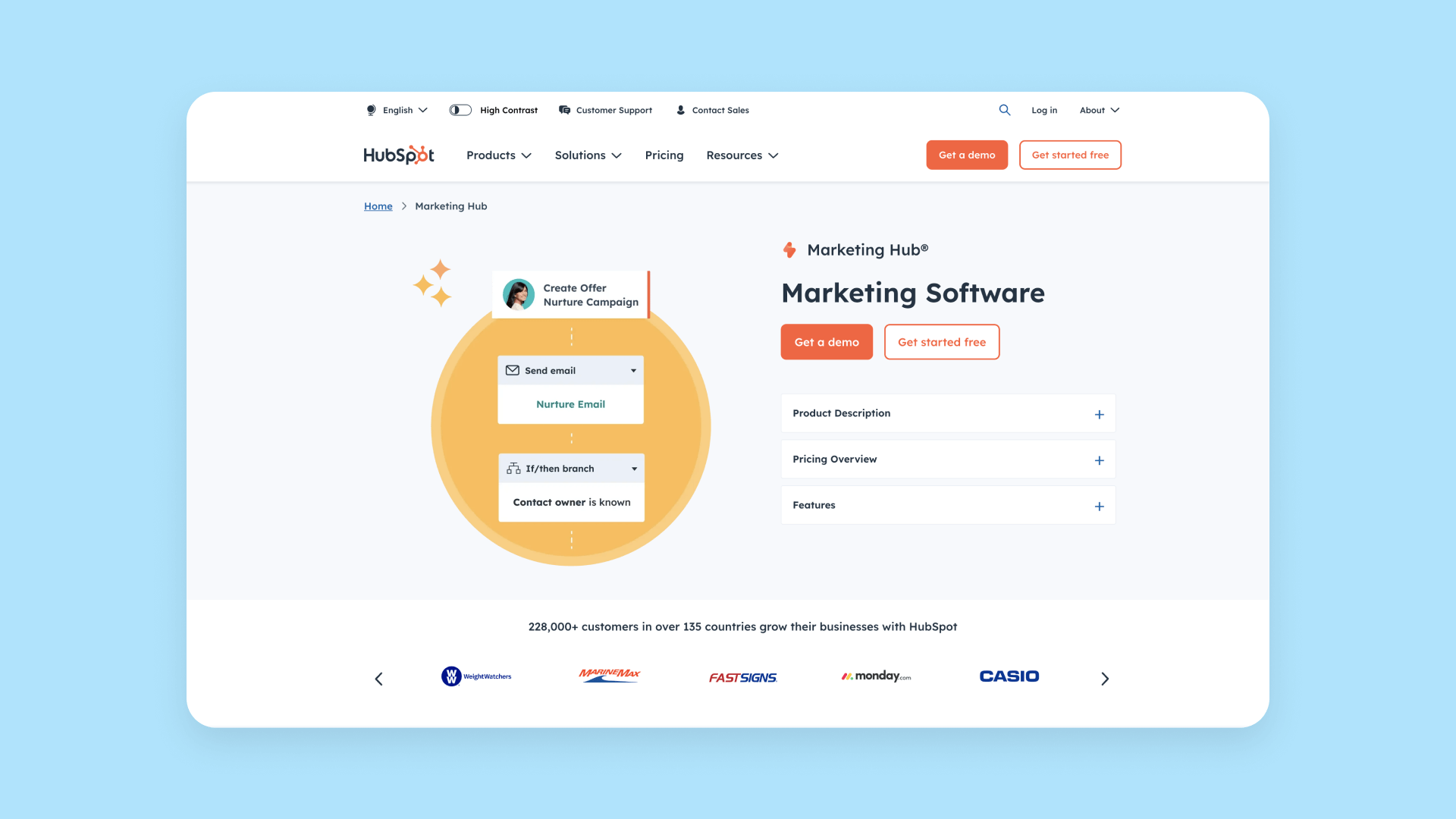
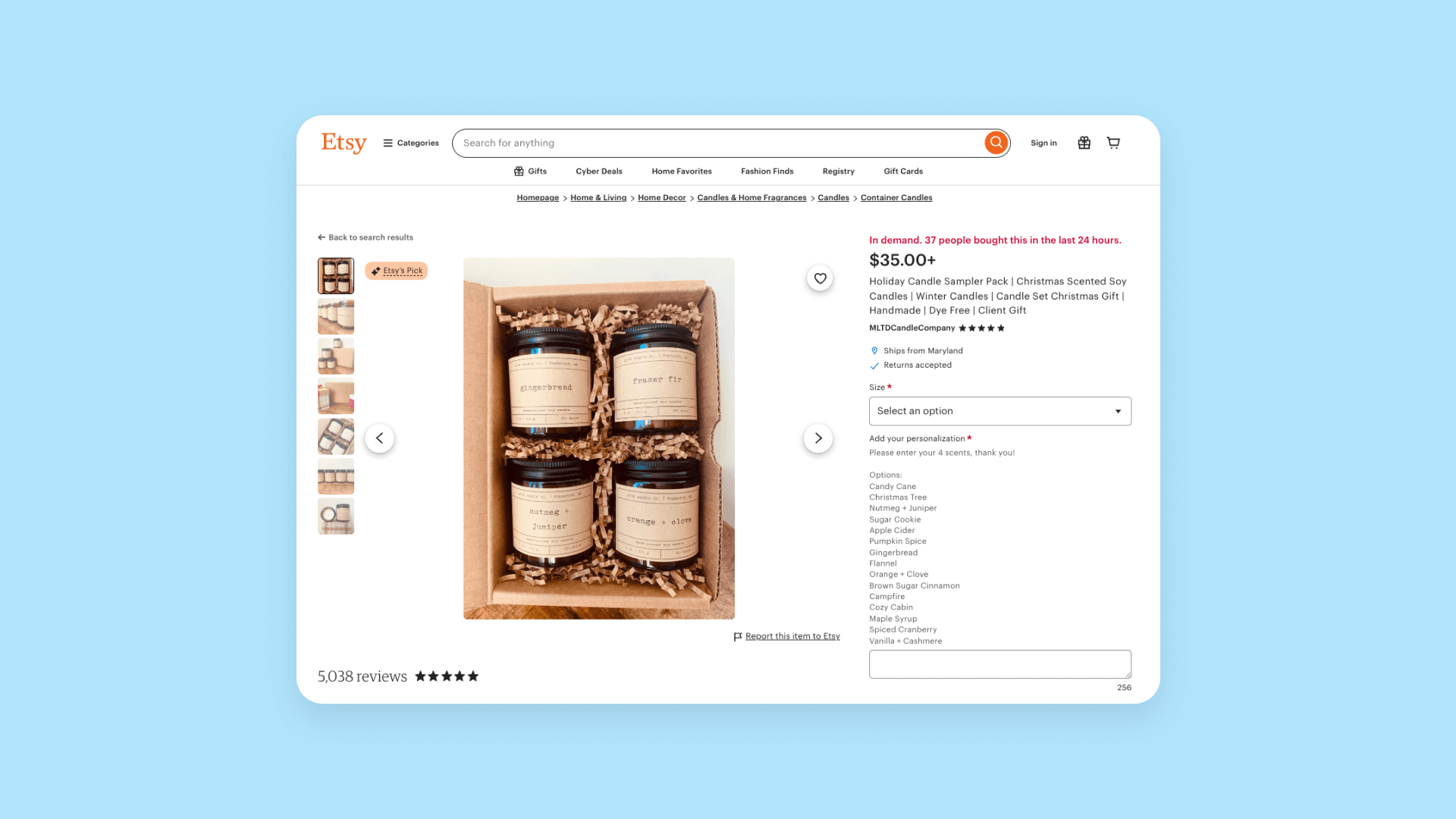
From the way the pages are designed, the elements included, the layout and order of elements, the sizing: Everything adds up to clarify the brand and position the products in a certain way to a certain audience.
Linguistic brand elements
While we often think of brands in visual terms, linguistic elements — text-based branding — is just as important. Some crucial elements in this category include:
Brand name
A good brand name provides a container for your brand personality, company values, and possibly, what you do. In any case, all brand names are an attempt to influence how the customer perceives you, even when the product or service is very similar. For example, consider the difference between:
- Charles Schwab (banking and investments, legacy brand) vs. Robinhood (banking and investments via a digital app aimed at “non-investors”)
- Banana Boat (kid-friendly sunscreen and skin products) vs. Chanel (high-end perfumes and beauty products)
- Whole Foods (high-end groceries focused on wellness) vs. Trader Joe’s (value groceries with quirky, fun branding)
Your brand name doesn’t necessarily need to describe what you do or offer, as “Whole Foods” or “Dunkin’ Donuts” does. Instead, it could hint at another aspect of your brand goals or values.
For example, Bubble founders Emmanuel and Josh chose the name “Bubble” as a wink to the concept of the “tech bubble” — one that they hoped to someday burst by creating a platform that allowed even non-technical founders to build their own websites, web apps, and mobile apps completely without coding.
Product and feature names
Creating branded names for the products and services you offer helps distinguish them — even just on the surface — from competitor products and offerings, and continues to reinforce your branding and personality.
For example, a McDonald’s hamburger isn’t just a burger — it’s a Big Mac. How does a “Big Mac” feel different from a Double Whopper (Burger King) or an All-American Smashburger (Smashburgers)?
Similarly, product names or brand names can eventually define a whole category — the ultimate branding win. For example, we may call tissues “Kleenex” (the brand name) or ask for a “Band-Aid” (a branded product name). Another example: “Just Google it!,” where the brand name becomes a verb for their product’s function (looking something up online). In these cases, the product or brand has become so definitive for that category that we use the branded name synonymously.
You can also use branded terms to differentiate features of your product. Starbucks accomplished this by using branded terms for drink sizes. Instead of the standard “small, medium, and large,” Starbucks went with “”Tall,” “Grande,” and “Venti.” These branded terms differentiate their products — and their customers — from non-Starbucks drinkers.
Taglines, slogans, brand promises
A good tagline or slogan can help make your brand memorable and provide a concise way to communicate your brand’s values or promises. For example:
- Nike’s “Just Do It” for an athlete-focused, high-energy brand.
- “Like a good neighbor, State Farm is there,” emphasizes their brand promise.
- “You’re not you when you’re hungry. Have a Snickers,” reinforces what they offer.
Slogans should be memorable and immediately reinforce some element of your brand.
Even more memorable than the tagline or slogan is the ad jingle. While not as popular for brands now in a very digital world, the ad jingle — when done well — can provide very memorable branding for your brand. Consider McDonald’s “Buh-duh-duh-duh-duh… I’m loving it,” KitKat’s “Give me a break, give me a break…,” or Kay Jeweler’s “Every kiss begins with Kay.”
These jingles and slogans set to a tune get stuck in our heads and keep brands — and their promises — top of mind.
Brand voice
Less easy to define is your brand voice. Brand voice is the way your brand speaks, writes, and talks about itself and to your customers. It’s more art than science, but when done well, it adds another layer of recognizability and personality to your brand.
Consider Wendy’s or Duolingo’s brands, especially online and on social media. These brands are irreverent, quirky, witty, daring, and bold — poking fun at customers and competitors and building a voice they are associated with.
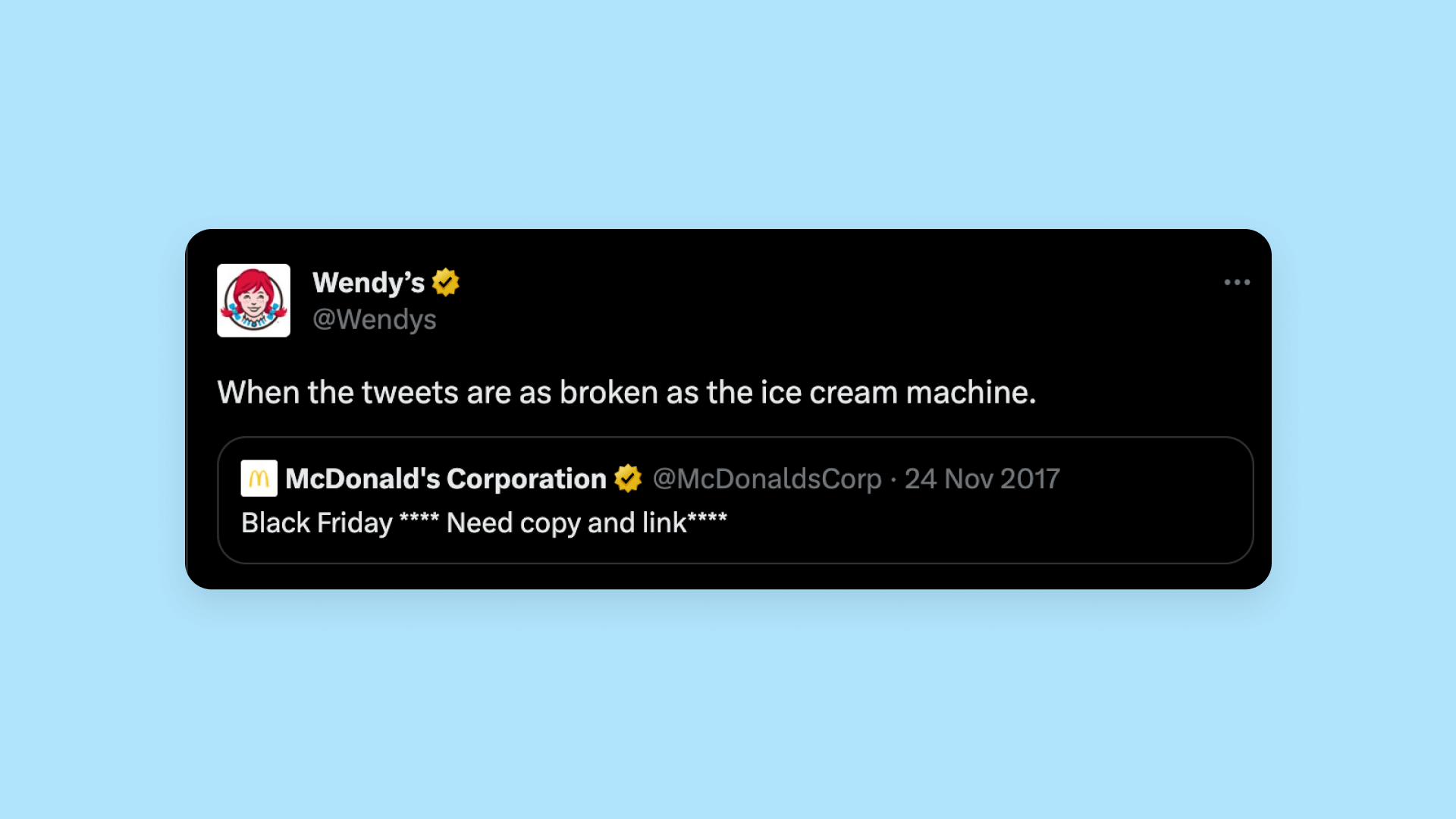
On the other end of the spectrum might be a brand like Reuters or Patagonia. These brands are much more polished, focused on facts, storytelling, and presenting themselves as trustworthy, committed, and responsible.
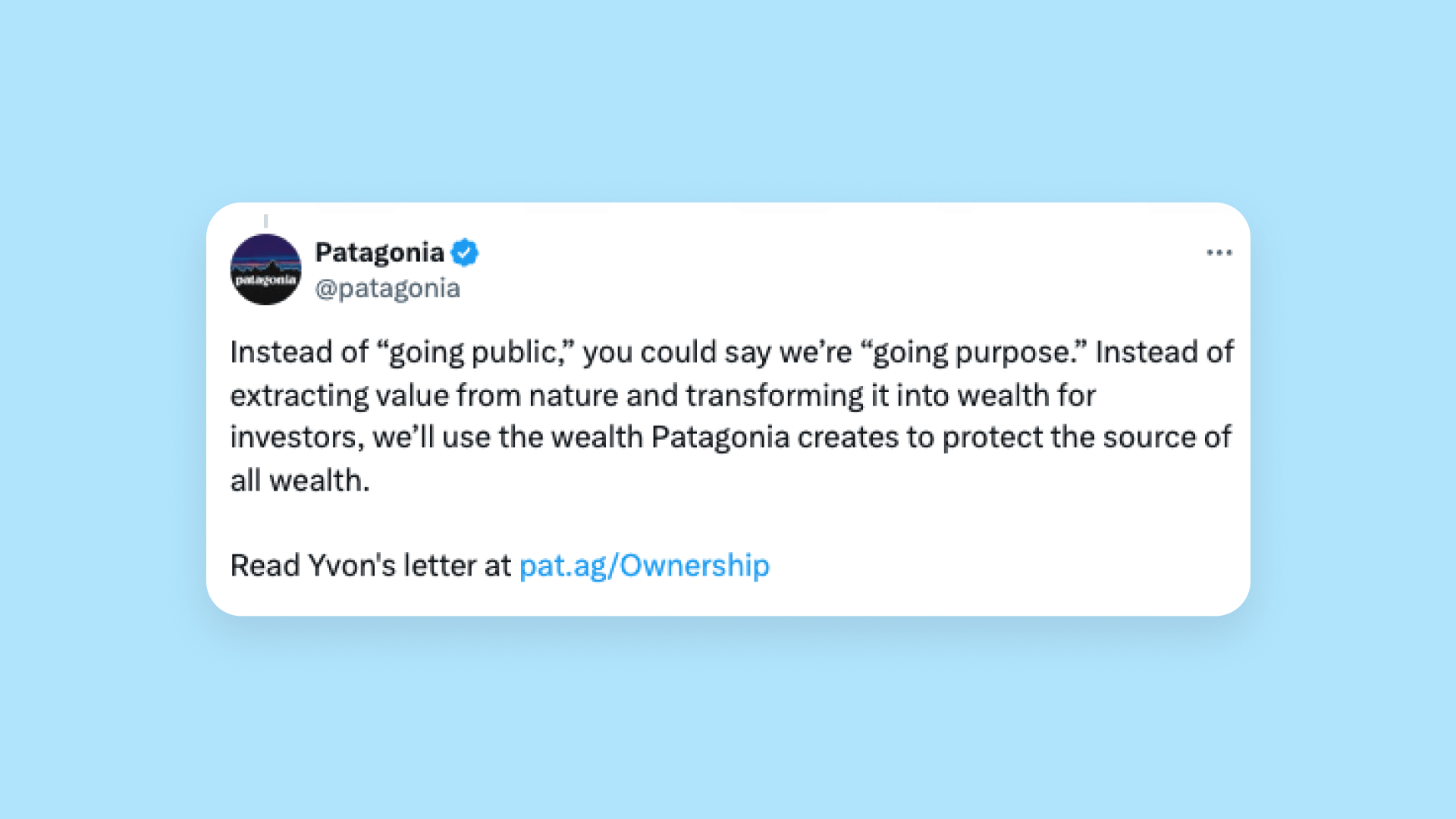
In short: The way you say things is just as important as what you say.
Additional brand elements
There isn’t a canonical list of brand elements that work for every brand. Aside from the absolute basics (i.e., a brand name, logo, colors, and typeface), everything else that makes up your brand will depend on factors like:
- Your product
- Your target audience
- Your biggest marketing channels
- Your brand personality
- Your mission and values
- Your differentiators
To add to that, almost anything can become a part of your brand, when done well. Any type of experience, emotion, or recognizable element can be “branded.”
To demonstratethis, let’s take a look at some non-traditional brand elements that can be strong differentiators for the right brands.
Smell
How can a smell be branded? Consider:
- The smell of Cinnabon when you’re walking through the mall
- The smell of Auntie Anne’s pretzels when you’re at the airport
- The particular perfume of the Abercrombie and Fitch stores or the force-field of scents exuding from any Bath & Body Works
Smell can absolutely be a part of your brand, especially if you have a physical location. Smell is also one of the strongest triggers of memory, so associating a scent with your brand can be a strong way to distinguish your product or store from other competitors.
Physical environments
The literal, physical environment of a store can also be branded. For example:
- The traditional “Golden Arches” outside many McDonalds
- The drive-through “Donut Hole” donut shop
- Disneyland theme parks, which are carefully and consistently designed even to the smallest detail to immerse visitors in the Disney world
These physical environments and experiences not only immerse visitors into the brand — they also create a literal, visual cue that becomes associated with the brand itself.
Digital experiences
If you don’t have physical locations, digital experiences can also be a strong way to differentiate your brand. For example:
- Domino’s Pizza Tracker, which gamifies the waiting experience by letting you “track” your pizza.
- Sephora’s Virtual Artist, which uses VR technology to let you “try on” makeup and test out products virtually.
- IKEA Place, which lets you design rooms online to help you visualize how different furniture looks and fits together in a space.
Many kids’ toys and brands nail this element with digital games or “worlds” for kids to explore — such as Lego Play Zone, Disney Games online, or websites like Webkinz, that allow kids to integrate their physical toys into a digital space.
People
People or mascots can also serve as a core element of your brand.
This can include real individuals, like Chip and Joanna Gaines; branded groups, like Best Buy’s Geek Squad; or mascots and characters like Flo from Progressive or the Geico Gecko.
These can range from people who are the brand, to people who promote the brand (i.e., a celebrity’s makeup or clothing line) to a character that’s mostly used to make the brand memorable and personable in ads and marketing (i.e., the Geico Gecko).
While not right for every brand, a character, person, or mascot that serves as “the face” of your brand can be a great way to connect with your target audience and embody your brand personality and values.
Customer service
Customer service can absolutely be a part of your brand experience. For this to work, you really need to have outstanding customer service — and generally, you need to have some specific element of customer service that distinguishes you from other brands.
For example:
- Amazon initially helped distinguish itself with easy returns and two-day shipping (something no one else offered at the time).
- REI offers a 365-day return policy for co-op members, which is much longer than the standard 30- or 60-day return window.
- A local coffee shop barista might remember your name and your order, compared to a chain like Dunkin’ or Starbucks.
Customer service is not only something that can distinguish your brand, but something that can drive brand loyalty and adoption. In 2023, customer surveys found that good customer service was the second-highest predictor of brand loyalty, with 47% of consumers saying that customer service is the most important element for brand loyalty for them.
Mission and values
For some brands, your mission and values can be a leading differentiator of their brand, which really resonates with many audiences. For example:
- TOMS or Bombas with the one-for-one giving model.
- Patagonia’s “Action Works” and commitment to sustainability, giving back, and donating to green initiatives.
If you’re a mission-focused brand, putting those values at the front and center of your brand’s messaging and products can really distinguish your brands from others that make similar products or offers but don’t “give back” in the same way.
Memorable brand elements examples
Whichever brand elements you use, the strongest brands work these elements together in a coherent and cohesive way. Looking at some examples of strong branding can give you a clearer idea of how all these elements work together to create a memorable brand identity.
Oatly
Oatly is an oat milk brand that targets millennials and other younger audiences with their playful, youthful brand. One of the big elements of their brand is as a disruptive brand — they’re disrupting the dairy industry, after all, by creating a non-dairy milk that’s tasty and high-end.
Consider how their branding adds up to form their personality and perception as a playful, disruptive brand:
- Typeface: The Oatly typefaces and fonts are bubbly and bold — reinforcing their playful, fun personality.
- Color palette: Light, pastel colors with a vibrant, colorful theme continue to enforce the fun personality. Most of the colors match the blue color of their packaging, creating a visual tie between their branding and their product.
- Brand voice: Their fun, irreverent, and edgy copy pokes fun at themselves and their competitors and shows off their brand personality.
- Illustrations and imagery: Instead of using realistic images, they use playful, cartoonish illustrations to further reinforce their playful, disruptive brand.
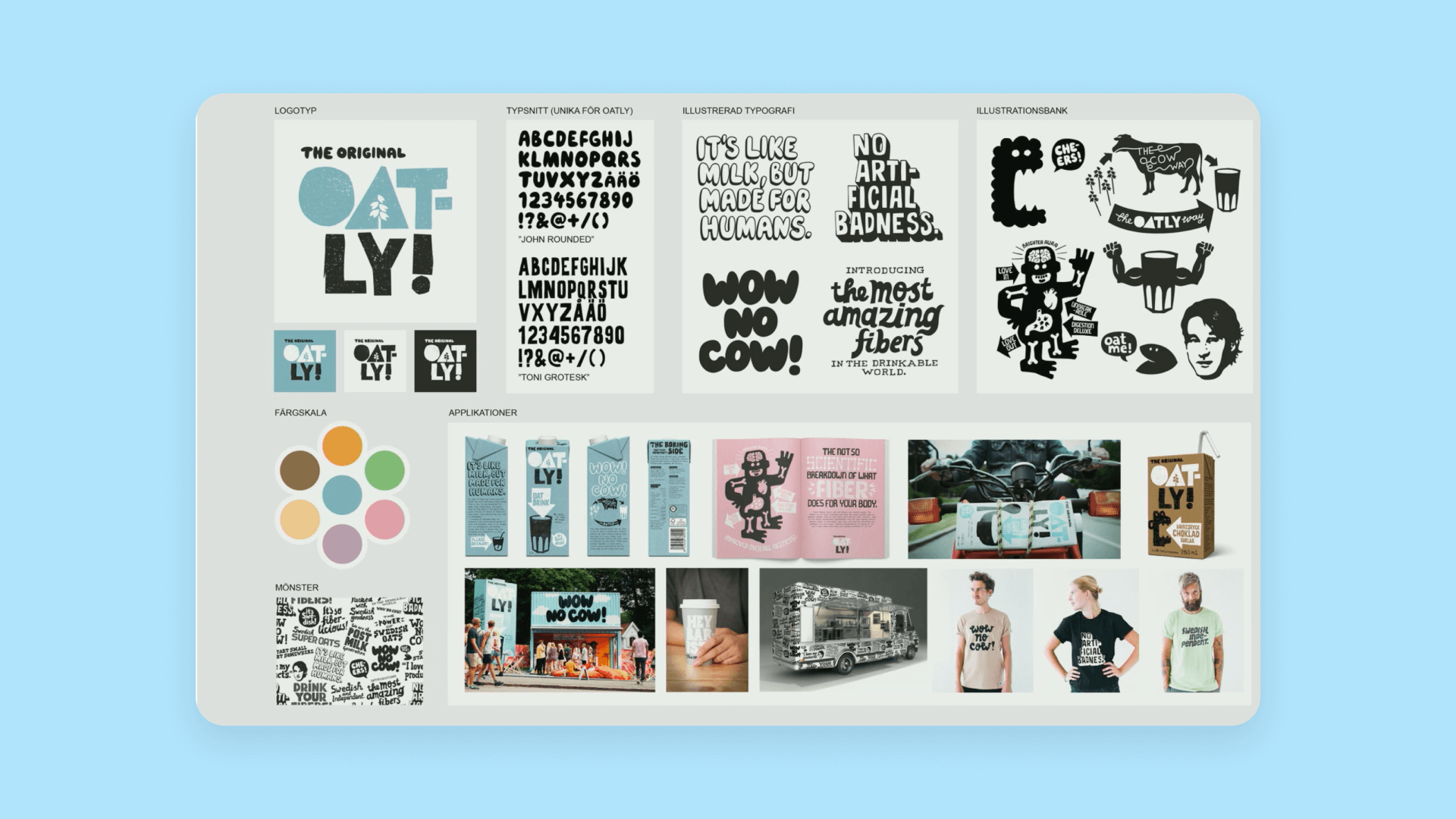
Airbnb
Airbnb wasn’t the first home-sharing and vacation rental brand — but it’s certainly become the most well-known.
That’s the power of good branding.
Airbnb’s brand has evolved significantly over time, but they’ve continued to design brand elements that reinforce their brand’s value of “belonging anywhere.” How?
- Product and feature names: “Stays,” “homes,” and “hosts” subtly reinforce the idea that when you stay at an Airbnb, you’re not at a hotel or an inn — you’re “home.”
- Images and illustrations: They rely heavily on images from their Airbnbs that show the experience of their stays. Real-life images highlight their “product” while also reinforcing how they want to be perceived.
- Color palette: Their standard pink color, alongside a warm color palette, reinforces their friendly, warm, empathetic brand personality. By contrast, their “Luxe” properties are branded with regal colors like rich purple.
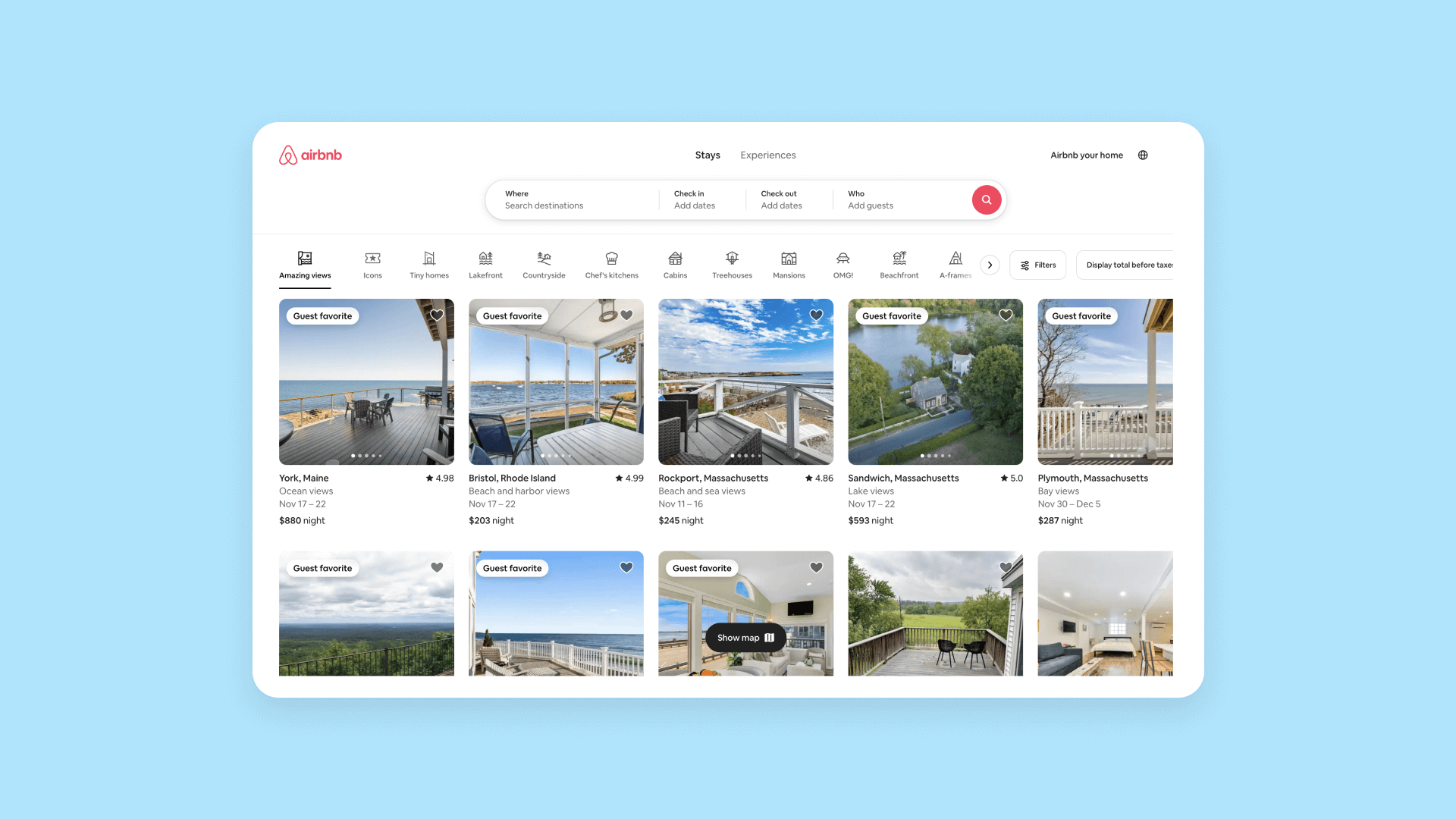
Bubble
We can’t close a discussion of branding without discussing our own brand! It’s easy to see how branding impacts major consumer brands like Oatly, Nike, or Apple.
But what about brands with a digital product or service? Branding is just as important, but it often shows up more subtly. Bubble is a brand that’s also a disruptor — but the goal of disrupting with Bubble is to make tech more accessible and bring software creation to a wider audience.
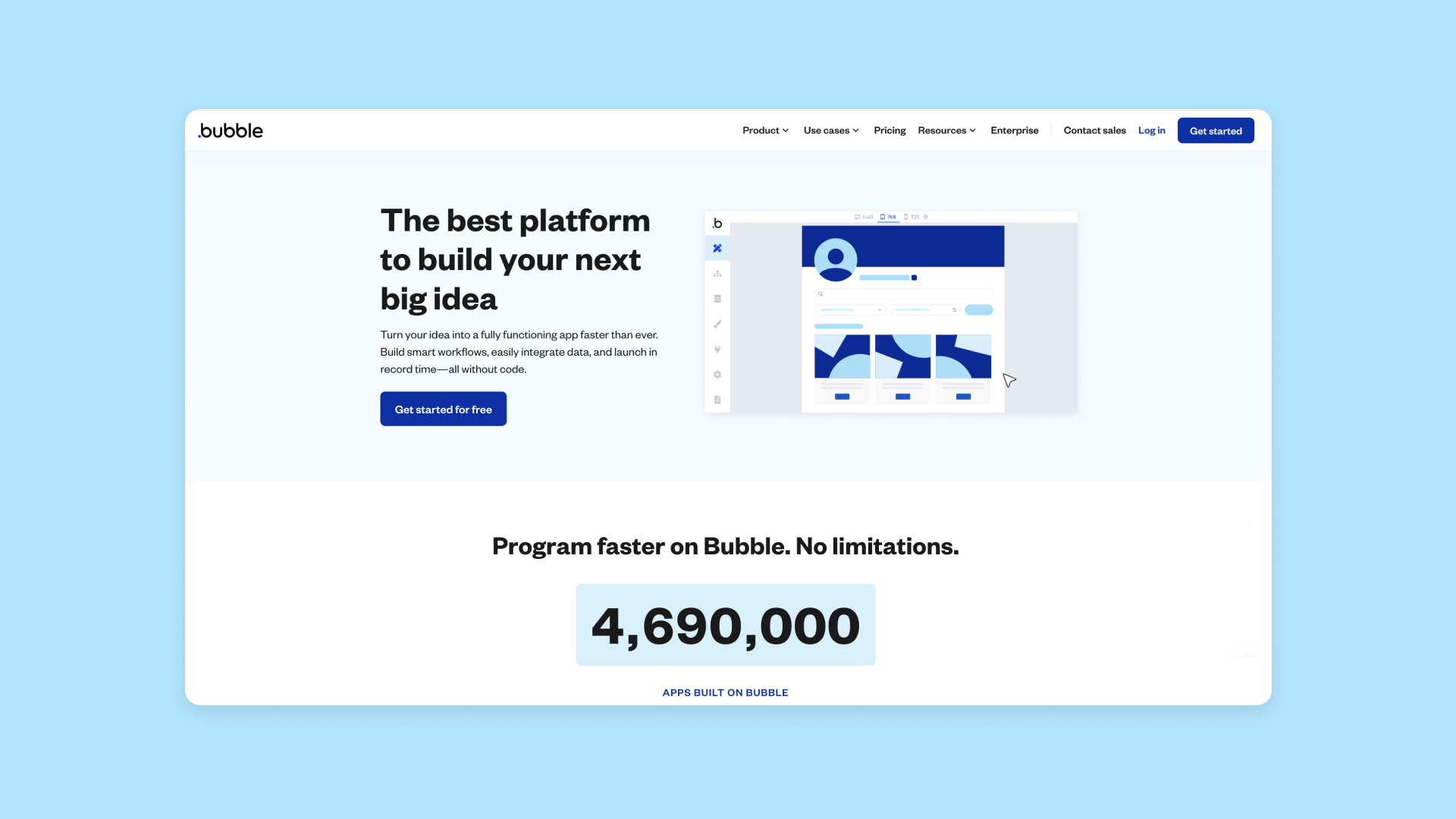
So how does that show up in our branding?
- Color palette: While most programming and technology software is branded with very neutral colors (typically black and gray), Bubble uses a clean, minimal design with plenty of white space and muted colors. This makes it more accessible to non-technical audiences and reinforces how Bubble makes software development accessible.
- Illustrations and imagery: Bubble uses illustrations instead of imagery in most of our branding, which highlights the easy, drag-and-drop visual editor that powers Bubble’s platform. The simple, visually clean imagery subtly reinforces the simplicity of our visual editor.
- Digital experiences: Bubble’s digital experience includes many community elements, such as our Forums, Academy, and Community spaces. These digital spaces are designed cohesively with our brand, but also serve as branded elements themselves that highlight our community-focused brand and platform that prioritizes learning and serving our audience.
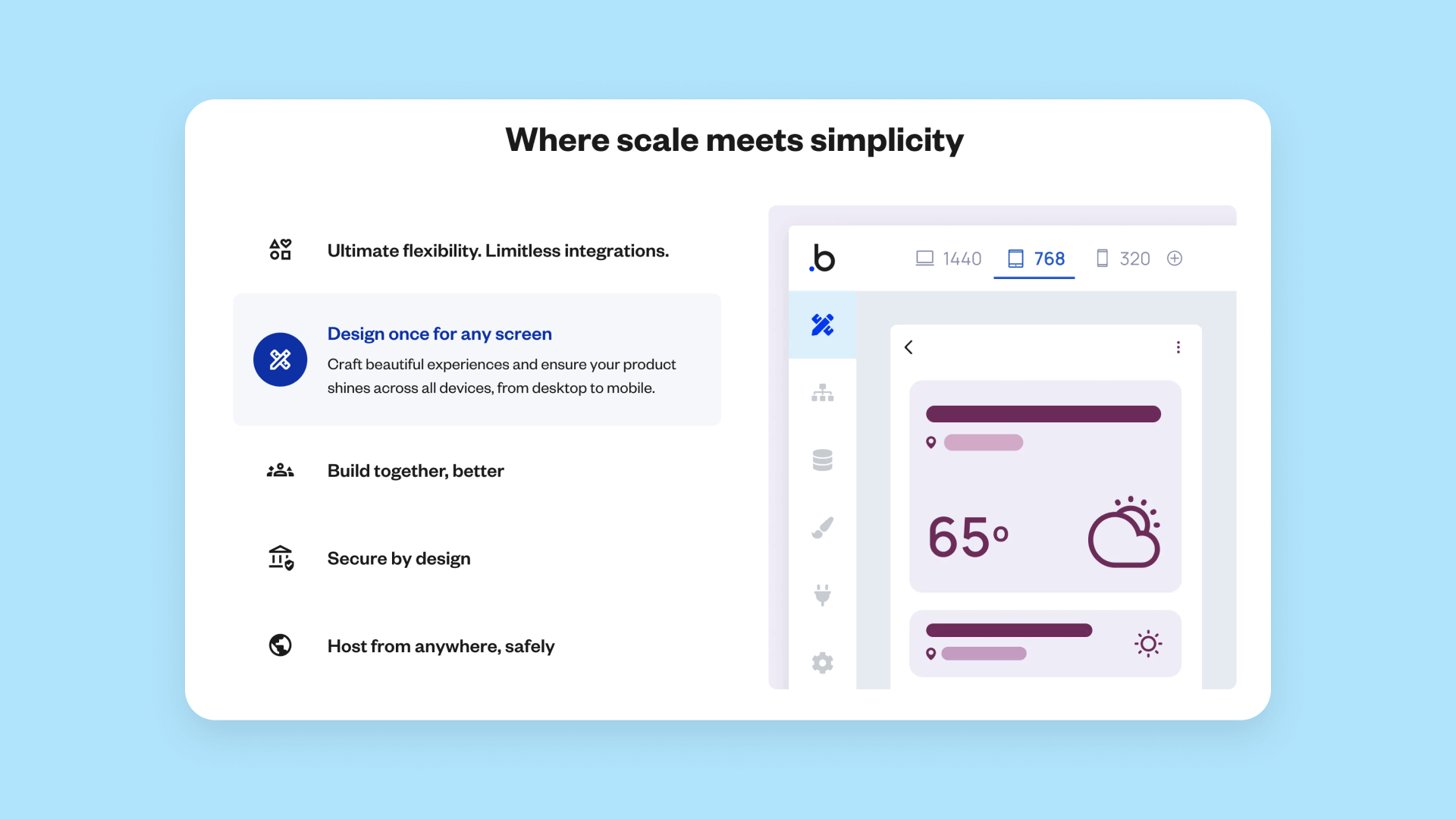
Build your brand and your product with Bubble
When you’re building a product and brand from scratch, picking the right platform to build on can make your branding straightforward or a slog.
On Bubble, you can build your web or mobile app with no-code development, using our visual, drag-and-drop editor. Bubble gives you full customization capabilities, plus flexible design options to give you full branding control over everything from color palettes to typefaces to illustrations, digital experiences, and more.
Plus, on Bubble, you can use repeating groups and styles to easily align all of your visual elements across your website and web app.
Even better: Building on Bubble is loads faster than traditional development, giving you more time and space to iterate, develop a brand that resonates with your audience, and expand your branding beyond just the visual elements of your web app.
Build for as long as you want on the Free plan. Only upgrade when you're ready to launch.
Join Bubble
